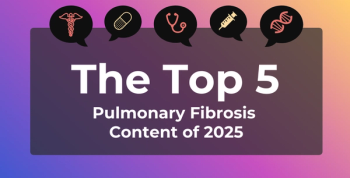
Urgent Change in Approach to HIV Pandemic Is Needed, Report Says
According to a report, existing HIV tools and strategies are insufficient, and despite historic breakthroughs in maximizing prevention and treatment strategies, the HIV pandemic will likely continue to be a global challenge for the foreseeable future.
The HIV pandemic is not on track to end, and a “dangerous complacency” in the response to the global pandemic is putting the world at risk for a resurgence of the disease,
According to the report, existing HIV tools and strategies are insufficient, and despite historic breakthroughs in maximizing prevention and treatment strategies, the HIV pandemic will likely continue to be a global challenge for the foreseeable future.
Up to 38.9 million people worldwide were living with HIV in 2015-2016, and there were approximately 2 million new cases of the virus diagnosed in 2015. In 2016, there were 1 million AIDS-related deaths and, overall, more than 35 million people have died of AIDS-related deaths since the start of the epidemic.
“Although the number of new HIV infections and AIDS-related deaths have markedly decreased since the epidemic peaked, little progress has been made in reducing new infections in the past decade,” states the report. “Without further reductions in HIV incidence, a resurgence of the epidemic is inevitable, as the largest ever generation of young people age into adolescence and adulthood.”
The report, written by an international commission of global experts brought together by The Lancet and the International AIDS Society, combined the expertise of more than 40 experts to make recommendations on how HIV and global health stakeholders can collaborate to advance outcomes.
The report highlights the remarkable strides made with antiretroviral therapy (ART) in allowing people living with HIV to manage the virus and have similar life spans to those of people without the disease. However, the commission asserts that HIV treatment alone cannot end the epidemic. The approach must be accompanied by aggressive and scaled-up efforts to enhance HIV prevention and the development of a
“Ironically, the diminishing energy on HIV is occurring at the moment when lessons learned during the HIV response could serve as pathfinders in the quest for sustainable health for all,” they add.
To pave a path toward ending the epidemic, the commission calls for HIV and global health researchers, healthcare professionals, and policy makers to work together to improve HIV response, deeming the collaboration essential for ending HIV by 2030. They also call for maintaining treatment access and more effectively funding HIV response to allow for broader health outcomes.
They recommend combining HIV screening into other areas of healthcare, giving the example of a combined screening with other noncommunicable diseases, such as diabetes and blood pressure. The commission modeled the combined screening and estimated that if the combined screening reached 10% of the Kenyan population every year over the next decade and ART coverage reached 78% by 2028, over 216,000 new HIV cases and 244,000 AIDS-related deaths would be averted.
They estimate that this would also identify 686,000 individuals with untreated diabetes and 7.57 million people with untreated high blood pressure.
“Health systems must be designed to meet the needs of the people they serve, including having the capacity to address multiple health problems simultaneously. No one can be left behind in our efforts to achieve sustainable health,” said co-chair of the Commission Chris Beyrer, John Hopkins Bloomberg School of Public Health, and past president of the International AIDS Society, in a statement. He added, “The HIV community must make common cause with the global health field.”
Newsletter
Stay ahead of policy, cost, and value—subscribe to AJMC for expert insights at the intersection of clinical care and health economics.







































